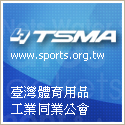Daily Archives: 2012 年 03 月 06 日
Dream team, Taiwanese fitness firms join forces (2012.03)
![]()
Dream Team – Taiwan fitness firms join forces
Fourteen leading Taiwanese fitness equipment manufacturers have teamed up in a bold move to improve the supply chain and efficiency of the entire industry.
They have formed the S-Team, along the same lines as the tie-up between bicycle manufacturers that formed the A-Team a few years ago.
The initiative was launched last year by Peter Lo, president of Johnson Health Tech. He convinced four other large-scale manufacturers and nine of their components suppliers to join the S-Team and to exchange ideas in the next years, as a means of sharing best practices and raising the competitiveness of Taiwanese fitness equipment makers.
“The international competition means that we have to restructure our supply chain, which still mostly consists of small-to-medium-sized companies,” explained Giant Chang, a specialist adviser behind the S-Team. “This is particularly important since some companies have moved part of their operations to mainland China, so that the supply chain in Taiwan is no longer complete. We recognized that we had to team up to rebuild an efficient supply chain, reduce costs and shorten lead times.”
Johnson has partly solved the issue by setting up its own plant to manufacture components in Taiwan, so that is production is entirely integrated and efficient. However, few fitness equipment companies have the resources to do the same.
The S-Team initiative is managed by the Corporate Synergy Development Center (CSD), Giant Chang’s company, the Footwear & Recreation Technology Research Institute (FRD), another advisory organization; and the Taiwan Sporting Goods Manufacturers Association (TSMA).
Open and transparent
For a start, the 14 companies have launched internal audits to measure their performances, which will enable them to compare their practices. By the end of the year, the members will meet and share the results of their audits with all the others.
“They have agreed to share everything, and to be entirely open and transparent amongst each other, which is brave and completely unprecedented,” Chang said.
The S-Team has established three standards of quality and productivity for the fitness equipment industry and the members will all strive to progress toward the highest standard in the coming years.
The S-Team managers estimate that it will take about seven years for each of the members to reach that stage. The stamp of excellence delivered by the S-Team is also meant to serve as a proof of quality for customers.
Judging from the results of similar initiatives in other industries, the move could bring about very significant improvements in the supply chain of the fitness industry.
For example, the bicycle industry’s A-Team has achieved a strong increase in average prices.
Before the launch of the A-Team, Chang said, the average FOB price of the bicycles sold by members was between $150 and $200, but on the strength of the A-Team’s actions, this has since increased to between $550 and $600.
After six years, the members of the M-Team in the machinery industry have sharply reduced lead times from an average of 45 days to as little as eight hours.
“In the fitness industry, the S-Team could help some of the manufacturers move from the production of home equipment to commercial equipment,” Chang said. “There’s no other choice for the Taiwanese fitness industry, otherwise it could become much weaker.”
Cost reduction
Another way to improve the supply chain and to reduce costs is to standardize some components that are not distinctive from each of the companies and their brands.
For example, he said, equipment manufacturers could agree on the horsepower of the engines in their treadmills, so they could order them in bulk and reduce the unit price.
Furthermore, the S-Team also aims to agree on some standard spare parts, which would make maintenance cheaper and more efficient.
The partnership could also help manufacturers cut the number of components again with the objective of reducing costs.
But at the same time, Chang emphasizes that the products should retain their distinctive design and innovation.
The S-Team is chaired by Peter Lo, the driving force behind the initiative. For the time being, the manufacturers of components who are members of the ST-Team are all suppliers to the equipment makers who are also members.
In the coming years, however, the S-Team’s management hopes that the group and its standards will be widely recognized which will encourage more companies to join and make initiative even more efficient.

